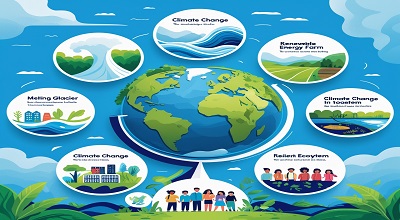Climate Change Curriculum
Climate change is arguably the most pressing global issue of our time. As scientific consensus grows on the human-induced causes of climate change and its potential consequences, the need for education systems to address this topic becomes more crucial. A climate change curriculum is an educational framework designed to raise awareness, foster understanding, and equip students with the knowledge and skills necessary to confront the climate crisis.
In this article, we will explore the concept of a climate change curriculum, its importance, and provide examples of how it can be integrated into various education levels. We will also delve into best practices for educators and highlight real-world case studies to demonstrate its impact.
The Importance of Climate Change Education
Education plays a pivotal role in shaping the future of climate action. By integrating climate change education into the curriculum, students not only understand the scientific basis of climate change. But also explore its social, economic, and ethical dimensions. The importance of a climate change curriculum cannot be overstated for several reasons:
- Building Awareness: Young people must understand the reality of climate change, its causes, and its consequences.
- Fostering Critical Thinking: By engaging with complex environmental issues, students learn to critically evaluate information and develop solutions.
- Empowering Action: A climate change curriculum enables students to become informed citizens capable of making sustainable decisions.
- Interdisciplinary Learning: Climate change intersects with multiple fields—science, economics, politics, ethics, and more—making it an ideal topic for interdisciplinary study.
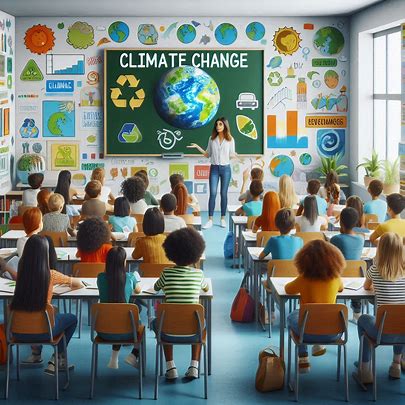
Key Elements of a Climate Change Curriculum
A well-rounded climate change curriculum incorporates a variety of key elements to provide a holistic education on the subject. These include:
- Scientific Foundation:
- Climate Science Basics: Understanding greenhouse gases, the carbon cycle, and the mechanisms behind global warming.
- Impact on Ecosystems: How rising temperatures, changing precipitation patterns, and sea level rise affect ecosystems and biodiversity.
- Climate Models and Predictions: Teaching students how scientists predict climate patterns and how these models inform policy.
- Social and Economic Impacts:
- Climate Justice: Addressing how climate change disproportionately affects marginalized communities. Including low-income countries and Indigenous peoples.
- Economic Implications: Exploring the costs of climate change, including damage to infrastructure, agriculture, and human health.
- Global and Local Adaptation Strategies: Understanding how different regions adapt to climate challenges and mitigate risks.
- Solutions and Mitigation:
- Renewable Energy: Teaching about sustainable energy sources such as solar, wind, and geothermal power.
- Carbon Footprint and Sustainability: Educating students on how to reduce their carbon footprint through lifestyle changes.
- Policy and Governance: Understanding global agreements like the Paris Climate Agreement and local environmental policies.
- Ethics and Values:
- Environmental Ethics: Discussing moral and ethical obligations to future generations and the natural world.
- Sustainability Mindset: Instilling values of sustainability, conservation, and stewardship of the planet.
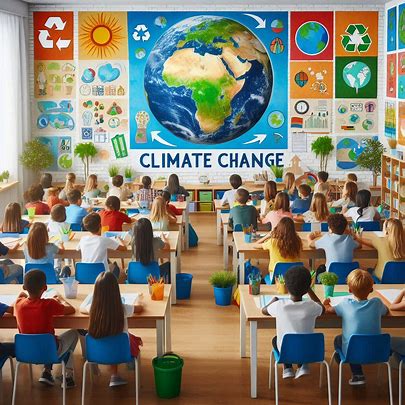
Examples of Climate Change Curriculum at Various Educational Levels
1. Primary Education (Elementary School)
At the primary level, the climate change curriculum is typically designed to be accessible and engaging for young students. The focus is on raising awareness and introducing key concepts in an age-appropriate manner.
- Example Topic: “What is Weather and Climate?”
- Objective: Introduce the basic difference between weather and climate.
- Activity: Create simple weather charts, track local weather, and discuss how weather patterns can change over time.
- Example Lesson Plan: Use storytelling, such as a tale about a fictional character exploring the effects of climate change on animals and plants, to help children understand the concept.
- Example Topic: “Protecting the Planet”
- Objective: Teach young children about the importance of recycling, reducing waste, and conserving water.
- Activity: Organize a school-wide recycling drive and discuss the impact of plastic on marine life and ecosystems.
2. Secondary Education (Middle and High School)
At the secondary education level, students can handle more complex topics related to climate science, its impacts, and possible solutions.
- Example Topic: “The Greenhouse Effect and Global Warming”
- Objective: Help students understand how the greenhouse effect works and its connection to global warming.
- Activity: Conduct a simple experiment using a greenhouse model (such as a glass jar) to demonstrate how heat is trapped.
- Discussion: Explore how human activities, such as burning fossil fuels, exacerbate the greenhouse effect.
- Example Topic: “Renewable vs. Non-Renewable Energy”
- Objective: Teach students about different energy sources and their environmental impacts.
- Activity: Research and present on various renewable energy sources. Such as solar and wind, versus fossil fuels.
- Discussion: Hold a debate on which energy source is the most feasible for their community.
3. Tertiary Education (University Level)
At the university level, climate change curriculum delves deeper into specialized topics, with a focus on advanced scientific principles, policy frameworks, and global solutions.
- Example Topic: “Climate Policy and International Agreements”
- Objective: Examine global climate policies, such as the Paris Agreement, and their implications for future global cooperation.
- Reading: Scholarly articles and reports from the United Nations Framework Convention on Climate Change (UNFCCC).
- Activity: Engage in a simulation of a climate negotiation, where students represent different countries and attempt to reach a global agreement on emission reductions.
- Example Topic: “Climate Change and Social Justice”
- Objective: Explore the intersection of climate change and social justice, focusing on vulnerable communities.
- Research Project: Study case studies from areas severely impacted by climate change. Such as the Pacific Islands, and assess the social, economic, and political consequences.
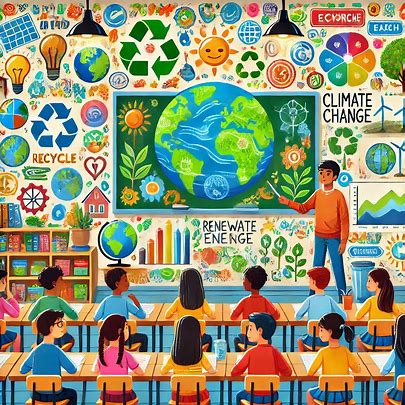
How to Integrate Climate Change Education in Different Subjects?
An effective climate change curriculum should not be isolated to one subject area. It should be integrated across various subjects to reinforce interdisciplinary learning. Here’s how it can be woven into different subjects:
- Science: Teach the physical processes behind climate change, its causes, and potential future scenarios using real-world data and climate models.
- Social Studies: Discuss the impact of climate change on various societies. Particularly in terms of migration, poverty, and inequality.
- Math: Use statistics and data analysis to study climate trends, calculate carbon footprints, and evaluate the effectiveness of mitigation strategies.
- Literature: Explore climate-related themes in literature, such as dystopian novels that imagine a world ravaged by environmental collapse (e.g., “The Road” by Cormac McCarthy).
- Art: Encourage students to express their thoughts on climate change through visual arts, films, and creative writing.
- Economics: Examine the economics of climate change, including the costs of inaction versus the investment in green technologies and infrastructure.
Best Practices for Teaching Climate Change
To teach climate change effectively, educators must consider the following best practices:
- Use Active Learning: Encourage students to engage in hands-on activities, experiments, and real-world case studies. Active learning keeps students involved and motivated.
- Encourage Critical Thinking: Allow students to explore different perspectives, such as climate skepticism, and equip them with the tools to analyze such viewpoints critically.
- Foster Hope and Agency: While the topic of climate change can be daunting, it’s essential to inspire hope by focusing on solutions and ways individuals and communities can make a positive impact.
- Incorporate Local Contexts: Adapt the curriculum to local environmental issues, so students can better connect the global problem to their immediate surroundings.
Real-World Examples of Climate Change Curriculum Implementation
- The Earthwatch Institute’s Climate Change Education Program: This global initiative focuses on providing students with real-world opportunities to engage in climate science research. Students participate in research expeditions and collect data that contributes to global climate studies.
- Australia’s Climate Change Education Strategy: In Australia, the curriculum has integrated climate change across various subjects, including science, geography, and civics. Teachers are provided with resources and support to facilitate the teaching of climate change and its implications.
- UK’s Climate Change Curriculum Framework: The UK’s educational policy encourages schools to teach climate change as part of a comprehensive environmental education program. The curriculum emphasizes both the scientific understanding of climate change and its social, political, and economic aspects.
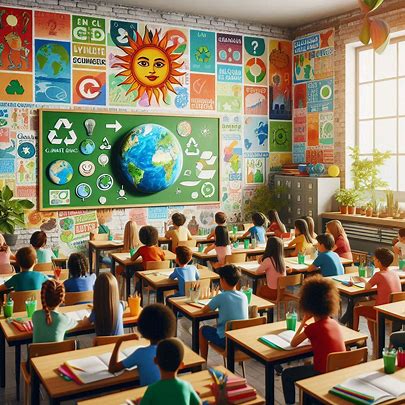
Conclusion
Incorporating a climate change curriculum into education systems worldwide is a crucial step towards preparing future generations for the challenges posed by global warming. The key to success is creating a curriculum that is comprehensive, interdisciplinary, and solution-oriented. By giving students the tools to understand the science behind climate change and the agency to take action, we empower them to make informed decisions and advocate for a sustainable future.
FAQs on Climate Change Curriculum
1: Why is climate change education important?
Climate change education helps students understand the science behind global warming, its impacts, and the solutions available. It empowers future generations to make informed decisions and take action on sustainability.
2: At what age should climate change be introduced in the curriculum?
Climate change education can begin early, with simple concepts introduced in primary school and expanding to more complex topics in secondary and tertiary education.
3: How can educators make climate change education engaging?
Educators can make the subject engaging by using hands-on activities, and real-world examples, and encouraging students to participate in debates, projects, and field trips related to climate change.
4: What practical solutions to climate change can be taught in schools?
Practical solutions include renewable energy technologies, reducing waste, conserving water, promoting sustainable agriculture, and adopting lifestyle changes that reduce carbon footprints.
5: How can climate change education promote social justice?
Climate change education can highlight how climate change disproportionately affects marginalised communities and encourage students to think about ethical solutions and policies that promote justice.
6: What are some challenges in teaching climate change?
Challenges include overcoming climate skepticism, addressing emotional responses to the topic, and the need for educators to stay informed about rapidly changing climate science.
7: How can students get involved in climate action beyond the classroom?
Students can get involved by joining environmental clubs, participating in community sustainability projects, advocating for policy changes, or even starting their own climate-focused initiatives.
